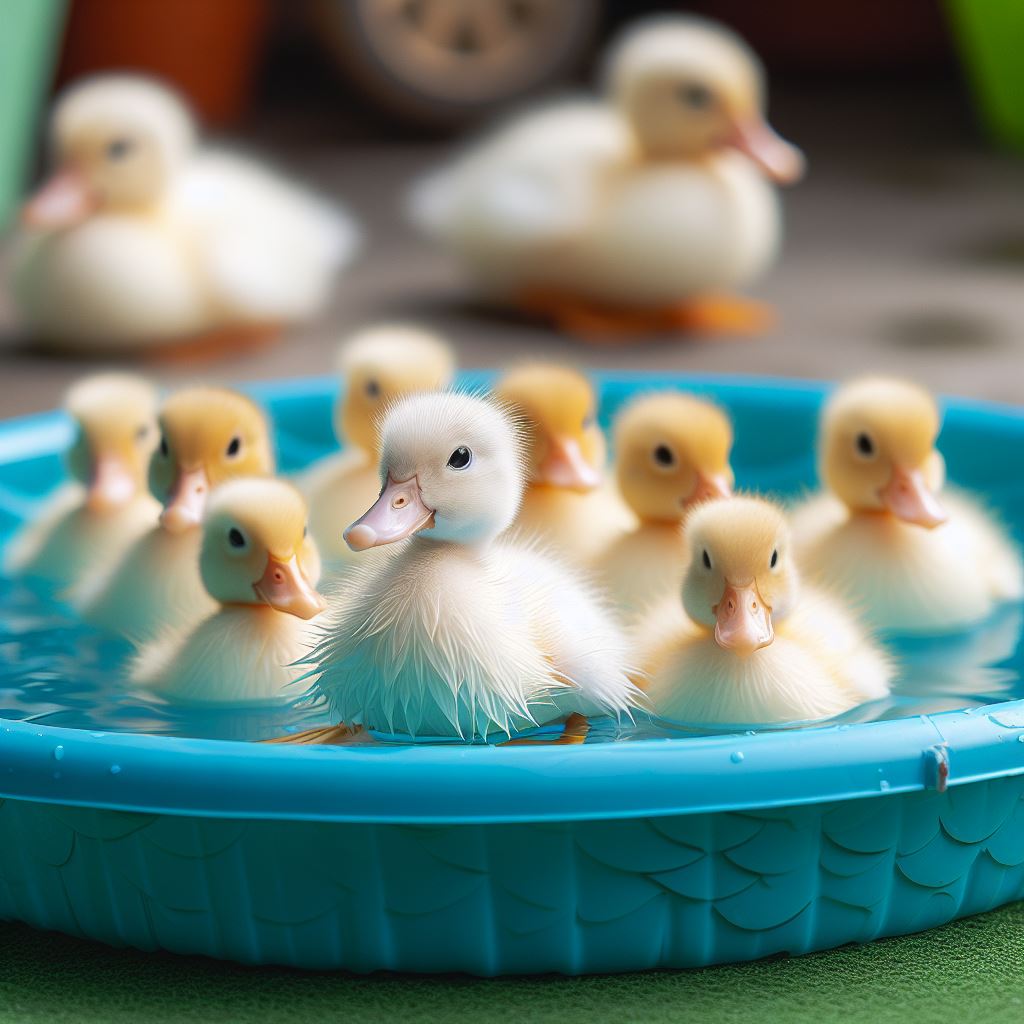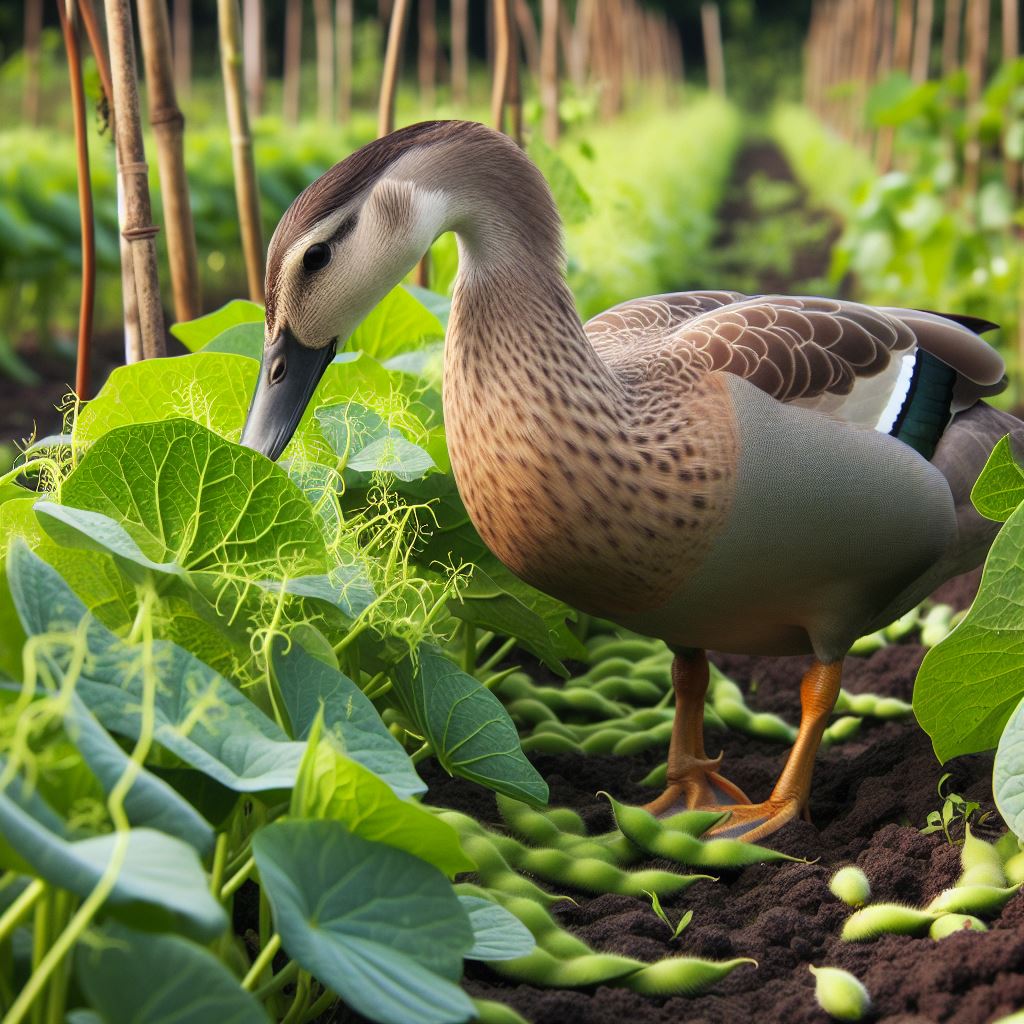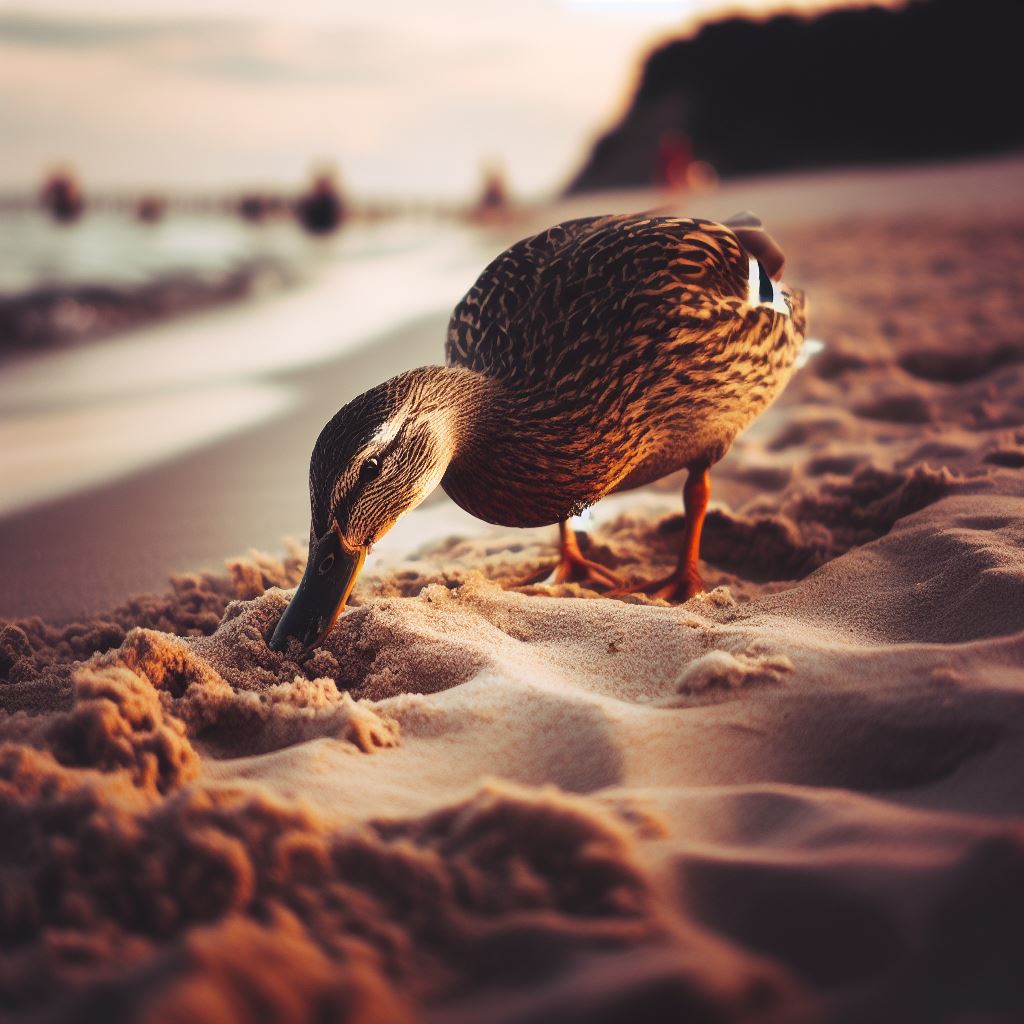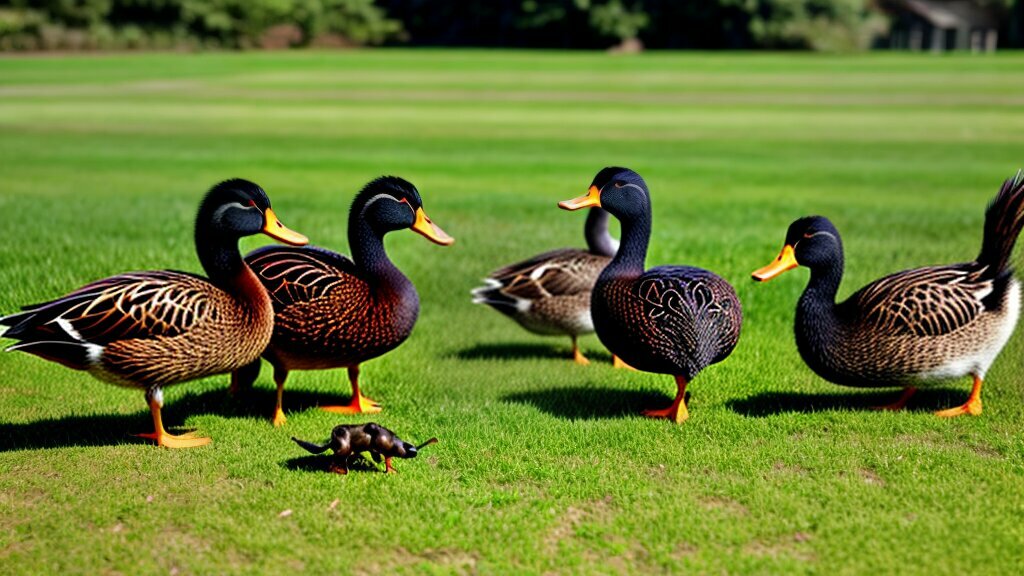Do Runner Ducks Swim? Dispelling the Myth

Table of content:
Runner Ducks are a unique type of duck known for their slender, upright body and inability to fly. Despite their funny, almost chicken-like appearance and behavior, these ducks still retain most natural duck behaviors and instincts.
One common myth suggests Runner Ducks don’t swim or need access to open water. However, the reality is these ducks not only can swim, but provide swimming opportunities to enhance their health and quality of life.
This article delves into the natural swimming abilities of Runner Ducks, the benefits swimming provides, and tips for safely allowing them to indulge their aquatic tendencies.
 The Aquatic Nature of Runner Ducks
The Aquatic Nature of Runner Ducks
While flightless, Runner Ducks evolved as waterfowl and retain adaptations for an aquatic lifestyle:
- Webbed feet provide propulsion and steering while paddling through water
- A streamlined body shape reduces drag and supports efficient movement
- Lightweight bones and good buoyancy aids floating and underwater diving
- Waterproof feathers keep them warm and dry even after extensive swimming
Young Runner ducklings also show innate swimming skills. Soon after hatching, they take readily to water, paddling and diving with ease. Swimming plays an important role in their natural behaviors:
- Foraging for aquatic plants, insects, tadpoles and small fish
- Escaping from predators by diving underwater
- Grooming feathers by preening oil from their underside while swimming
- General enjoyment, play, and fulfilling their instincts to paddle and float
So while flightless, Runner Ducks retain the expected waterfowl anatomy and behavior needed for an aquatic lifestyle.
Why Swimming Benefits Runner Ducks
Access to open water provides Runner Ducks with several key health and behavioral benefits:
Physical Health
- Maintains muscle strength and cardiovascular fitness from regular paddling strokes
- The resistance provided by water keeps their body toned and muscles engaged
- Swimming allows for greater physical activity than possible on land alone
Mental Wellbeing
- Provides enrichment and serves as a form of recreation, play, and stress relief
- Floating peacefully on the water supports relaxation and contentment
- The diversity of stimuli boosts their engagement with their surroundings
Hygiene & Feather Care
- Waterproofing requires preening oil distributed from the underside while swimming
- Clean feathers resist parasites, fungal/bacterial infections, and skin irritation
- Mineral salts and aquatic plants condition feathers, keeping them shiny and healthy
Natural Behaviors
- Foraging along shorelines and diving for tasty morsels of aquatic plants and insects
- Fulfilling innate desires to float, preen, dive, and propel through the water
- Avoiding predators by fleeing along the water’s surface and hiding underwater
So while Runner Ducks can thrive on land alone, swimming plays an integral role in their health, hygiene, and quality of life.
Creating Swimming Opportunities
To indulge the swimming instincts of Runner Ducks, owners should provide safe access to open water. Considerations include:
Swimming Area
- A pond or kiddie pool measuring at least 3 ft x 6 ft
- Larger is better to accommodate multiple ducks swimming and diving
- Ensure easy entry/exit points with ramps or shallow areas
- Locate in a secure spot safe from predators and with shade/shelter
Introducing Ducklings
- Start ducklings in tubs or very shallow pools under supervision
- Slowly increase depth and size as they grow more capable
- Provide ramps, floats, or stones so they can easily climb out
Water Access
- Always ensure access to fresh, clean water for drinking
- Change small tubs/pools daily to keep the water sanitary
- Monitor larger ponds for signs of fouling or contamination
Enrichment
- Floating toys, balls, rafts to play among and climb onto
- Aquatic plants along the edges to forage in
- Gentle fountain, bubbler, or waterfall as sensory stimulation
Proper swimming areas let Runner Ducks indulge their aquatic nature safely.
Enhancing the Swimming Experience
Several simple considerations can vastly improve your Runner Ducks’ enjoyment of their swimming area:
Landscaping
- Position water features near shrubs or treed areas to allow ducks to avoid harsh sun while swimming or resting on shore
- Provide a sandy beach or pebble-lined entryway into the water for comfortable lounging
- Float flowering aquatic plants for visual appeal and foraging opportunities
Entry/Exit Points
- Ensure the surrounding ground has good traction to avoid injury
- Position ramps and stairs at angles shallow enough for ducks to climb
- Extend ramps well into the water so ducks don’t tip backward when entering
Water Temperature
- Monitor water temperature daily during hot or cold spells
- Provide a heating source like an aquarium heater to maintain 10-20°C during winter
- Ensure adequate shade in summer to avoid dangerously hot water
Maintenance
- Remove leaves, algae mats, feathers, and other debris regularly
- Control water clarity by limiting run-off from lawns/gardens during rains
- Clean pond edges/liners with pipe cleaners or other gentle scrub brushes
Proper design and care of your Runner Ducks’ swimming area helps entice them to make good use of it for health, hygiene, and happiness.
Common Concerns
While swimming provides great benefits, backyard pond owners should consider a few precautions:
Predators
- Secure the pond from raccoons, foxes, and neighborhood dogs with protective fencing
- Provide an enclosed, fox-proof “duck house” for nighttime security
- Supervise swims until ducks are fully feathered and too large to carry off
Disease Risks
- Maintain strict water quality standards by frequent changing/filtering
- Avoid contamination from lawns, gardens, or wild bird feces
- Remove and treat sick ducks immediately to prevent disease spread
Algae Bloom
- Control run-off of nitrogen/phosphorous into pond water
- Manually remove mats of algae overgrowing the pond
- Ensure adequate aeration via pumps, fountains to prevent stagnant zones
Winter Swimming
- Provide access to a heated shelter so ducks can warm up after winter swims
- Maintain a section of ice-free water to meet their year-round desire for occasional paddling
- Avoid total freezing by installing a pond heater or de-icer
With some basic precautions, backyard pond owners can avoid these hazards while still allowing their ducks ample opportunity to indulge their swimming instincts.
Runner Ducks and Swimming
| Key Topic | Important Details |
|---|---|
| Natural Ability | Webbed feet, lightweight bones, streamlined shape allow easy propulsion through water |
| Health Benefits | Maintains fitness, muscle tone; Promotes enrichment and relaxation |
| Hygiene | Feather waterproofing requires preening oil from belly while swimming |
| Natural Behaviors | Foraging along banks for plants/insects; fleeing predators through water |
| Swimming Areas | >3ft x 6ft pond or pool with ramp access and aquatic plants |
| Duckling Intro | Start in shallow tubs under supervision; slowly increase the depth |
| Water Access | Always provide fresh clean water for drinking |
| Enrichment | Floating toys, balls, rafts for play and sensory stimulation |
| Maintenance | Remove debris regularly; control algae and nutrient input |
| Winter Care | Provide heated enclosure or maintain an ice-free zone for year-round access |
Conclusion
Swimming plays an integral role in the health, natural behaviors, and quality of life of Runner Ducks. While flightless, these ducks retain adaptations allowing them to float, dive, and propel through the water with ease.
Young ducklings take readily to swimming and water remains important even for adult ducks for enrichment, hygiene, foraging, and avoiding predators.
Backyard duck owners should provide a safe pond or pool, enriched with aquatic plants and easy entry/exit points.
With some basic maintenance and precautions, Runner Ducks can spend hours indulging their aquatic tendencies.
So while they may look and act much like chickens while on land, Runner Ducks still benefit immensely from access to open water for paddling.
Their unique appearance and behaviors shouldn’t fool us into overlooking their inherent nature as waterfowl!
Welcome. I’m Adreena Shanum, the proud owner of this website, and I am incredibly passionate about animals, especially poultry. I founded adreenapets.com as a labor of love, stemming from my desire to share my knowledge and experiences with poultry enthusiasts worldwide.




